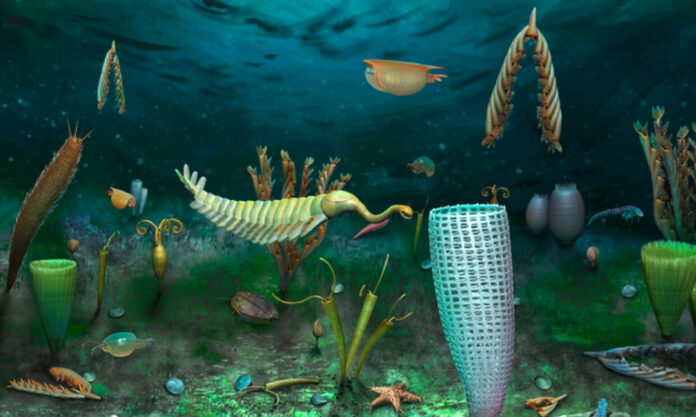They’re calling it a “Marine Dwarf World”. And it’s the latest discovery by researchers at the world-leading Nanjing Institute of Geology and Palaeontology. Best parts? It’s 462 million years old and it was found in Wales of all places.
Castle Bank, Wales, in the United Kingdom, was the scene for the discovery, comprising over 150 miniature species, news of which was released on 2 May.
That location is key to the find. Castle Bank, situated in the east-central Welsh county of Powys, is somewhat unique for its offering of unparalleled glimpses into the evolution of life. This it does by preserving soft tissue and entire organisms.
In this case, an entire-miniature-marine world. The fossils discovered range from just one to three millimetres in length. Many are intricately detailed; internal organs, nerves, tentacles, even digestive systems, can be seen in the find.
Credit for the historic discovery lies with an international research team led by scientist, Joseph P. Botting; together with associate researcher, Ma Junye; and researcher, Zhang Yuandong, from the Institute in Nanjing.
While the Institute regularly hits the headlines for world firsts from the fossil field, this discovery is particularly newsworthy for its filling a gap in our understanding of the evolution of marine life.
The “Burgess Shale Type” (BST) of buried-fossil reservoir the team found dates from the Ordovician Period, as opposed to the Cambrian Period (542-485 MYA) from which other similar discoveries have been dated.
As such, the team has helped to shed light on the transition from Cambrian-style organisms to more advances types typical of the Ordovician Period, a time in which there was an explosion in the diversity of life.
For comparison, other studies of discoveries from the same period have been far inferior. Neither the BST fauna found in the Fezouata Biota (Morocco) or Afon Gam Biota (also in Wales) discoveries display the high biodiversity in terms of both overall and soft body organisms that was found in Castle Bank.
The team’s findings were published in Nature’s journal, Ecology & Evolution, on 1 May.









